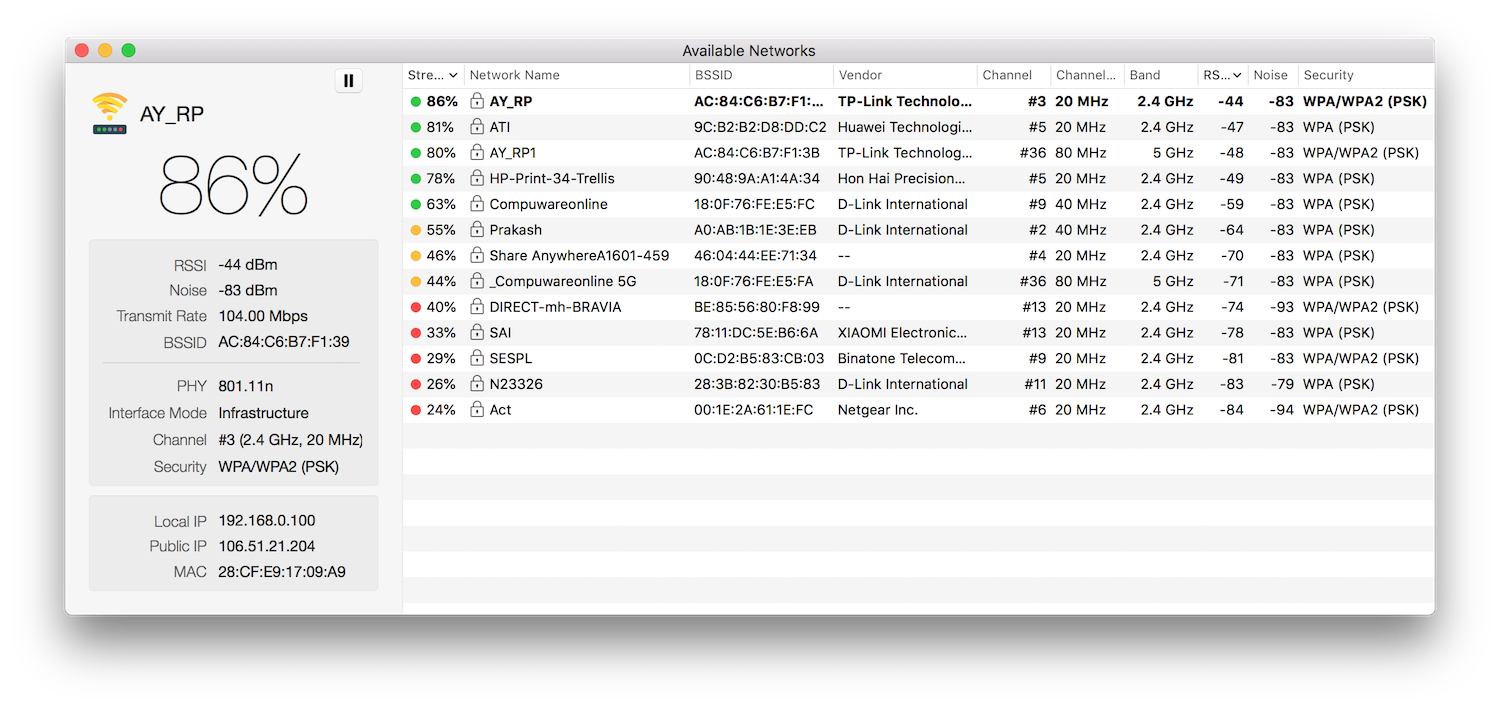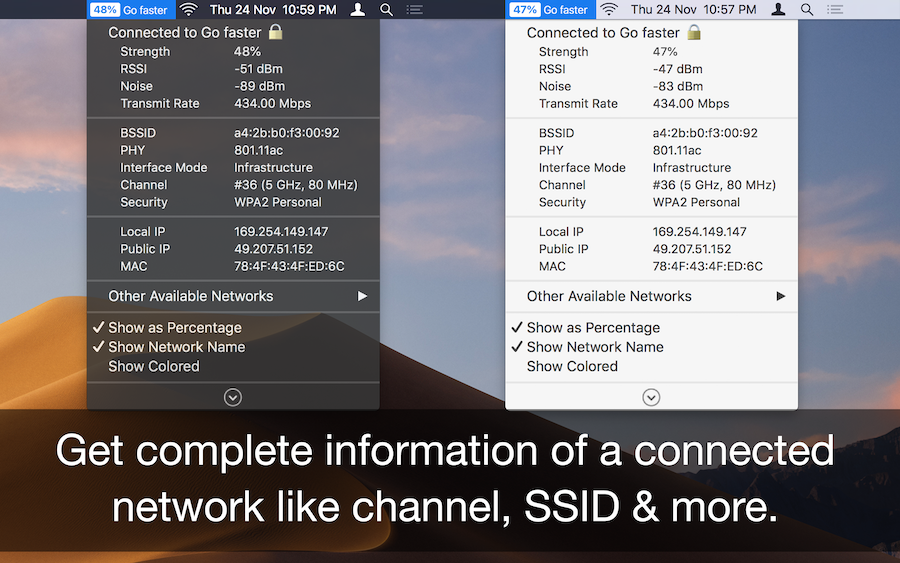
- MAC TEST WIFI SIGNAL STRENGTH DRIVERS
- MAC TEST WIFI SIGNAL STRENGTH FULL
- MAC TEST WIFI SIGNAL STRENGTH MAC
There is an old plist that once controlled “opportunistic” roaming behavior, which I suspect meant roaming above -75 dBm RSSI. The goal is to avoid other strong channels, I believe. Yes, its the option key, but i didnt see any channel information displayed, except for the one I was on. 11v are supported in Windows 10, however, if the wireless adapter supports those features. Its generally the option key for that, not the command key. There doesn’t appear to be any way to modify this value.Įnabling 802.11k or 802.11v won’t help because macOS does not yet support those features, although they don’t prevent Macs from using an SSID that has them enabled. do /System/Library/PrivateFrameworks/amework/Versions/Current/Resources/airport -I. For best results, you’ll probably want to increase the text size of your terminal font, the Command+ keystroke makes that easy.
MAC TEST WIFI SIGNAL STRENGTH MAC
One reason for this is that once the roaming threshold is crossed, a Mac will only roam to a BSS that is 12 dBm louder than the current BSS, which would require a roaming candidate BSS to have an RSSI of -63 dBm or better before roaming will occur at -75 dBm. That said, while Apple says Macs should usually roam at -75 dBm, that doesn’t match my experience. The algorithms that control client roaming are usually a black box, so Wi-Fi engineers have make a lot of assumptions about them when designing WLAN’s for clients that require efficient roaming. This is very helpful and I wish other manufacturers would do the same. In 2016 Apple published a webpage that explains how macOS makes roaming decisions and what roaming features it supports.
MAC TEST WIFI SIGNAL STRENGTH FULL
Why is the native macOS Wi-Fi menu showing a full signal with -80 dBm RSSI and MCS 0? Wi-Fi Signal tells the real story. However there was another BSS in the -60’s which would have allowed for much better Wi-Fi performance. Here’s a screenshot for a MacBook Air which wouldn’t roam away from a BSS whose RSSI has fallen to -80 dBm, while the laptop was only able to transmit at MCS 0, 7 Mbps. Too often they are “sticky clients” and you need to disable/enable Wi-Fi on them to get them to associate with a better BSS. To access it, hold the Option key and click the Wi-Fi icon on the menu bar at the top of your screen. And my experience has been that Mac clients don’t roam particularly well.

There are some other useful controls like “Roaming Aggressiveness” and you can also enable Fat Channel Intolerance if a neighbor is rudely using 40 MHz of spectrum in 2.4 GHz.Īlthough macOS has many advantages over Windows when it comes to Wi-Fi, such as the ability to natively do packet captures with the internal chipset, macOS doesn’t have the same level of customization as a Windows machine with an Intel chipset. One of my favorite of these controls is “Prefered Band,” which I usually adjust to instruct the chipset to prefer the 5 GHz band over the 2.4 GHz band.

MAC TEST WIFI SIGNAL STRENGTH DRIVERS
One of the nice things about Intel wireless chipsets is that the drivers expose a lot of controls to help tune the chipset’s operation.


 0 kommentar(er)
0 kommentar(er)
